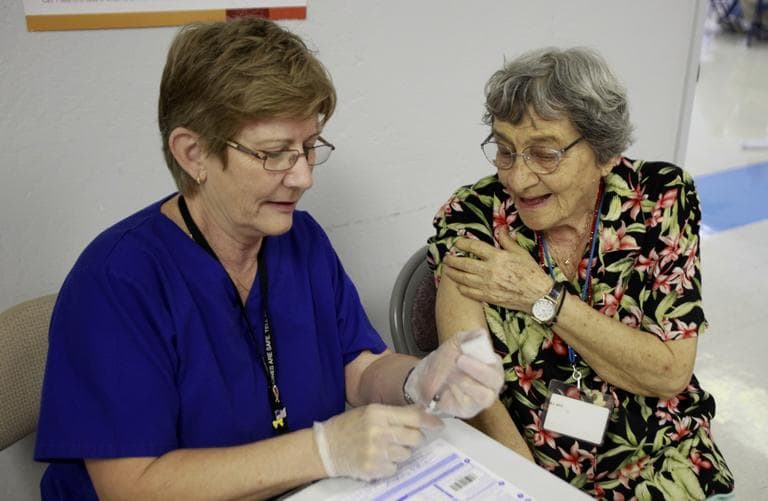Advertisement
With Affordable Care Act In Spotlight, Many Provisions Already In Effect
Resume
The Patient Protection and Affordable Care Act was signed into law two years ago. Many of the provisions have already kicked in, but according to a poll by the Kaiser Family Foundation, two-thirds of Americans said they haven't been affected by the law yet. Only 14 percent said they had benefited.
One of the most highly publicized benefits is the provision that has allowed 2.5 million young adults to stay on their parents' insurance until they turn 26. And all insurance plans have to provide preventive services like mammograms, colonoscopies and cholesterol tests without deductibles or co-pays.
The law also closed the so-called "doughnut hole" for 4 million seniors in the Medicare Part D prescription drug plan. That's when Medicare recipients who had paid a certain initial amount in prescription costs had to pay all of their other drug costs until they spent a total of $4,700 a year.
Here are some other highlights of the Affordable Care Act:
- Provides coverage to more than 30 million uninsured
- Expands Medicaid to cover more uninsured low-income people
- Creates exchanges, state-based health insurance markets, for small businesses and people buying private coverage individually
- Provides government subsidies for many middle-class people buying private health insurance through an exchange
- Requires most citizens and legal residents to carry health insurance, either through an employer, a government program or by buying a policy directly. IRS will assess fines for noncompliance
- Requires companies with 50 or more workers to provide coverage, or pay fines if any of their employees ends up getting a health insurance subsidy
- Raises taxes on upper-income households; imposes a variety of taxes and fees on the health care industry. Places a 10 percent sales tax on indoor tanning. Some taxes are already in effect.
- Cuts Medicare payments to hospitals, insurers and other service providers; improves preventive benefits for Medicare recipients and gradually closes prescription drug coverage gap. Limits future increases in Medicare spending. Some Medicare provisions are already in effect.
- Significantly increases federal regulation of the health insurance industry (already in effect)
- Congressional Budget Office estimates coverage expansion will have a net cost of $1.1 trillion from 2012-2021. Spending cuts and tax increases are currently projected to offset the cost, for a modest reduction in federal budget deficits.
The Associated Press contributed to this article.
Guest:
- Mary Agnes Carey, Kaiser Health Network
This segment aired on March 26, 2012.